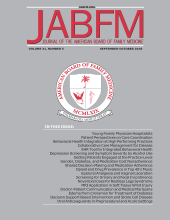Abstract
Background: Cogan syndrome is an uncommon disorder that presents with symptoms involving the eyes and ears. At its onset, it can mimic many common entities. Family physicians should be aware of Cogan syndrome because it can be successfully treated if it is recognized early in its course. It is one of the few treatable causes of deafness.
Methods: MEDLINE files were searched from 1982 to the present for “Cogan’s syndrome.” Additional references were obtained by cross-referencing bibliographies from available articles.
Results and Conclusions: As first defined in 1945, Cogan syndrome includes nonsyphilitic interstitial keratitis and attacks of vertigo, tinnitus, and hearing loss. Although it usually begins with only one symptom, most patients have both auditory and ocular findings within 1 year of the onset. If untreated, most patients become deaf within 36 months. Blindness occurs in about 5 percent of patients, but ocular symptoms relapse during a period of years. The disease eventually involves other organs with clinical and pathologic findings that suggest vasculitis. Aortic insufficiency, the most serious complication, develops in 15 percent of patients. The cause of Cogan syndrome remains unknown, but several studies suggest an autoimmune-mediated process. Many reports document an improvement in symptoms with immunosuppressive therapy, particularly if started early in the course of the illness. Family physicians should include Cogan syndrome in their differential diagnosis when a young adult seeks care with audiovestibular symptoms or ocular inflammation.







